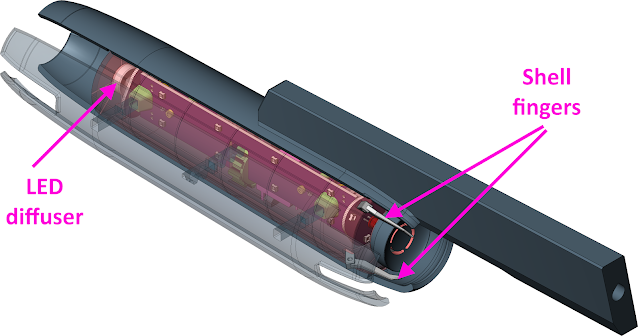Feels odd to realize that it's been 9 months since the last update, and oh boy what an interesting 9 months it's been... But through all this chaos
we have managed to make some fun memories with the little one, memories
that somehow feel that bit more special then before 🥲
One thing we quickly realised is that we have way less time on our hands
(surprise surprise), as our "free" time is now either catching up on
chores/admin or trying to recharge our mental batteries. But as always we have
found ways to adapt to the new situation (or so we claim), whether it be by
improving project workflow/tracking or outsourcing tasks where/when possible.
So in this update I want to first talk about the former, improving project
workflow, specifically how I now plan to use Altium Designer when working on
PCBAs. Then to finish things off, I will show some snapshots of projects I
have miraculously found the time to work on :O
Altium Designer Workflow & Templates
Looking back, my PCBA design workflow was not that efficient, which I guess
was not a huge deal at the time... But now that free time is that bit
harder to come by, I have tried to optimize a number of aspects. For
example:
|
Old
workflow
|
Revised
workflow
|
|
Altium
component creation & management
|
A
SCH symbol & PCB footprint would be linked up in a relevant schematic
library (SchLib), of which there were 12 (res, cap, IC…).
SCH
symbols would typically be reused, but would be copied from one component to
another. So updating a SCH symbol used by many components was very tedious
as I had to update each one manually.
PCB
footprints would always be created from scratch, as I could not easily check if a
footprint already existed until I generated it (usually via IPC Compliant
Footprint Wizard).
|
All
components are now managed by a single database library (DbLib), which I edit
via Microsoft Access. This makes it very easy to link up a single SCH symbol
and/or PCB footprint to many components, so creating a new component is now
much quicker.
Since everything is linked up by a database, if I want to update a SCH symbol or a PCB footprint that's used by many parts all I have to do is make a single edit. Lastly,
PCB footprints (and their name) are created based on manufacturers
recommendation (vs going direct to IPC Compliant Footprint Wizard). Making it
easier to see if an existing footprint is present in the database.
|
|
Altium
project creation
|
When
creating a new Altium PRJ, I would first try to find a previous project that
somewhat resembled what I was hoping to achieve. Then I would manually copy
and modify all the project files (SCH, PCB, BOM…) & individual
parameters… Inevitably missing something crucial along the way.
|
I
now have an Altium PRJ template which automatically adds all relevant files
(SCH, PCB, BOM…) when a project is created. Plus, all linked files now
reference the project parameters, making it very easy to update project
revisions & release datapacks.
|
|
Altium
project release (datapack generation)
|
Once
a project was finalised, I would manually go over all line items in the
ActiveBOM and allocate a manufacturing part number to those that did not have
one (like jelly bean resistors & capacitors that used a generic
component).
With
the ActiveBOM configured I would then create the project datapack (PCB FAB
& ASSY files) by manually generating each output container in the OutJob.
With 7 containers this meant 7 individual clicks, not including
setting up the container names.
|
Now that all components are managed by a database library (DbLib), it's much easier to lock in the key details (MPN plus two alternative) during component creation. So, no more fiddling with ActiveBOM where MPN info would be lost between projects.
Lastly,
datapack generation is now handled by the Project Releaser, which configures the output containers (PCB FAB, PCB ASSY, PRJ validation &
snapshot…) based on project parameters. Letting me generate a datapack with
the click of a single button :D
|





With all that said, the next step is to use the revised workflow &
templates for my
Prusa XL
side filament sensor mod. But since Prusa have not yet shared the design
files (like with the MK3S), I will have to get the printer first before I
can make any major progress.
Project Snapshots
As promised, here are some snapshots of projects I have found the time to
work on:
1. AR2 Barrel is nearly complete, just putting on the finishing touches (LED diffusers, shell fingers, spring holder...)


2. Waifu decided to hold her first DnD campaign and asked me to design and 3D print some props


3. Fortifying the work area because someone has learned how to crawl ; - ;




























































